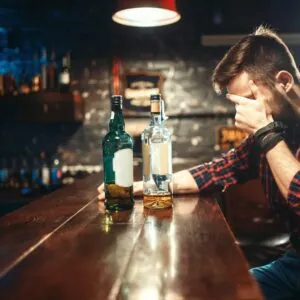You’re driving along, either alone or with passengers. Maybe you see the collision about to occur, or maybe it’s a complete surprise. No matter what, you’re going to be surprised, and possibly in shock. An automobile collision is always a stressful situation and experience. We’ve prepared the following rules and tips for you to keep in mind in case you are ever involved in a collision, or for you to quickly review afterward:
1. Check for Injuries:
Assess yourself immediately after the collision. Are you bleeding? Do you feel any immediate pain? Then do the same for your passengers and the other driver, if possible. Check to see if they are unresponsive. Injured persons should not be moved unless they are in imminent danger, including yourself! If there are any injuries in your vehicle or another, call 911 immediately.
2. Be Safe!
If you can, move your vehicle to a safe location that does not block traffic, such as the side of the road. If your vehicle cannot be moved off the roadway, activate the vehicle’s four-way flashers to alert approaching traffic. It is best and safest to stay seat-belted in your vehicle after a collision. Avoid walking or standing near the roadway in case another collision occurs.
3. Should I Call Emergency Services?
If anyone is injured, then you should call 911 immediately. If no one is injured but there is damage to the vehicles, then the police must be contacted if there is more than $1,000.00 of property damage.[1] Remember that some property damage may not be visible at the scene, so it is always best to exchange information (see below!)
4. Stay at the Collision scene:
Do not leave the scene of a collision! If a collision results in property damage or an injury to a person, then you must exchange information with the other driver (see more below).[2] [3] If the vehicle is parked and unattended, you must leave a written notice with your name, address, and the name of the owner of the vehicle (if the vehicle is not yours).[4]
5. Exchange information:
Following a collision, you must provide your name, address, and vehicle registration number to other people involved in the collision. You also need to collect this information from every other driver involved, and it is best practice to gather their phone number and an email address. You must also produce your driver’s licence if requested.[5] You should also collect the names of any witnesses, along with their phone numbers, addresses, and email addresses. Do not rely on the police to gather this information!
6. Record the Scene:
It is important for the future investigation that you record the scene where the collision occurred. Nowadays this is easier because of cell phones. Take photographs of the vehicles and their placement. If the vehicles have moved, then photograph the original location, including any tire marks. Look around and see if and the location is near any businesses or homes that may have a video recording. Photograph the other vehicles involved, including their license plates and the make of their vehicles.
7. Do Not Apologize or Admit Fault:
Other provinces have laws that prevent apologies from being used as evidence in determining fault or liability[6]. New Brunswick does not have such laws. If you apologize or say the collision was your fault, it could be used against you later on. However, any statement given to the police at the scene of the collision will not be used against you by an insurance company (however it may be used in criminal proceedings). It is also important to advocate for yourself at the scene. The other driver or law enforcement may attempt to say who is at fault at the scene. Do not agree and speak to your insurance company or lawyer regarding who is at fault. It is easier to advocate for yourself if you follow the above steps, including documenting the scene with photographs, witness names, and potential video.
8. Contact Your Insurance Company:
After you arrive home, call your insurance company or insurance broker to report the collision.[7] The insurance company will make arrangements for your vehicle to be repaired, and may ask for a statement or ask you to sign authorizations for your personal information. The insurance company will also ask for you, your employer, and your physician to complete forms about your injuries.
Call Moss Hachey Law if you have been involved in a motor vehicle accident
If you’re asked to give a statement about your injuries, it’s best to contact a lawyer first to get advice. At Moss Hachey Law, we provide you with free consultations regarding your injuries. There are no obligations attached. Reach us online or give us a call at 506 449 7544.
Please be aware that there are exceptions to rules summarized above. This blog entry contains information of a general nature only and should not be relied on for legal advice. The information is current only to the date of publication and may be subject to change.
[1] Motor Vehicle Act, RSNB 1973 M-17, s. 130(1).
[2] Motor Vehicle Act, RSNB 1973 M-17, ss. 126 and 127.
[3] Motor Vehicle Act, RSNB 1973 M-17, ss. 125 and 127.
[4] Motor Vehicle Act, RSNB 1973 M-17. s. 128.
[5] Motor Vehicle Act, RSNB 1973 M-17, s. 127.
[6] Apology Act, SNL 2009 CA-10.1; Apology Act, RS 2009 c. 34.
[7] Insurance Act, RSNB 1973 c. I-12, s. 230, statutory conditions 3 and 4.




